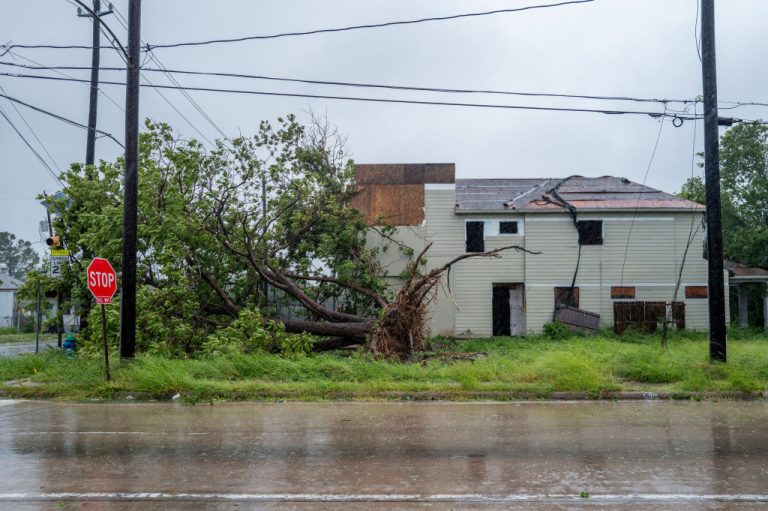A record heat wave that began when Western Canada saw the British Columbia village of Lytton eclipse the all-time high set in Las Vegas, Nevada at 49.6 C (121.28 F) at the end of June has continued across much of British Columbia, Alberta, and Saskatchewan, laying waste to Canada’s agricultural production.
Todd Lewis, head of Agricultural Producers Association of Saskatchewan, told Financial Post on July 16 he was shocked by what he saw during a recent trip down a rural highway south of the Province’s capital, Regina. The oceans of canola crops normally lining Highway 6, distinguished by a hallmark bright yellow flower the plant produces before generating the seed pods farmers harvest so manufacturers can create canola oil and other products, were instead brown and green.
Lewis, a grain and cereal farmer himself, described the situation for this year’s plants as already “beyond the point of no return.”
“There’ll be acres in Western Canada that will have zero crop come off, zero yield.”
He anticipated canola yield across the Province would be hit by as much as a 25 percent reduction, assuming rain starts to fall. If rain doesn’t come and the drought continues, Lewis said Provincial losses may reach 50 percent.
Success
You are now signed up for our newsletter
Success
Check your email to complete sign up
The rancher also pointed out the crisis wasn’t just limited to canola, but was poised to be fatal for cattle. The heat has wiped out much of the Province’s grazing pasture, forcing ranchers to use their winter feed supplies.
Lewis anticipates many ranchers will cull their herd, even their prime breeding stock, as a result, “If we don’t have water, and if we don’t have feed, there’s not much choice, right?”
According to the same report, British Columbia also lost 400,000 chickens to heat-induced death.
A July 14 article by CBC said data from the weekly Provincial Farm Report showed only 14 percent of farmland across the entire province had “adequate” moisture, noting grasshoppers and hail storms have contributed to severe crop damage.
In Saskatchewan’s eastern neighbour of Manitoba, 35-year farming veteran Andy Keen said he hadn’t seen a comparable drought in 33 years, according to a July 8 interview with Reuters. The heat had caused his canola to flower weeks early, meaning the plants will likely lose their petals and die unless the weather is moist until harvest time, preventing the plants from generating seed pods.
Keen said he expected to lose 80 percent of his 1,700 acre plot.
A fellow Manitoba farmer, Ted Dyck, who grows wheat instead of canola, said his crops weren’t in any better shape: growth was uneven and what has survived has only grown a single stem, but secondary stems are required for a profitable harvest, “Lots of damage is done, there’s no doubt about that…I think we’re looking at half a crop at best.”
In Canada’s western-most province, British Columbia, President of the BC Fruit Growers Association, Pinder Dhaliwal, told CBC on July 6 that 50 to 70 percent of the entire Province’s cherry harvest was damaged in the record-setting carnage.
Dhaliwal said because the heat was so extreme, and temperatures did not cool at night, much of the fruit cooked while still on the trees to such a degree that even the pits were hot to the touch.
A Kelowna fruit farmer, Sukhpal Bal, told CBC before the heat dome arrived, the crop as it was growing looked to be one of the best in 20 years. Now, the fruit is so badly damaged that it cannot be used even for purees or juicing.
David Mutz, an Abbotsford raspberry and blueberry farmer told CBC 75 percent of his early raspberries and as much as 30 percent of his blueberries were now only salvageable for juicing.
In a July 12 YouTube video published by Reuters, footage of Denman Island, a small island off the eastern coast of Vancouver Island, showed graphic scenes of mussels, clams, and other shellfish having been cooked alive in their shell, turning the shore into a graveyard of dead sea life.
“It’s never smelled like this before,” said oyster picker Dale Warren amid footage of thousands of dead animals.
“We knew the heat might have been bad, but we weren’t expecting to see what we saw.”
“It basically cooked the oysters, clams, mussels… most of the mussels around here are all gone. My clams, you see the sand dollars and stuff, are all dead,” said Joe Tarnowski, owner of Baynes Sound Oyster Co., a family business started by his father 65 years ago.
He calculated his farm lost 30 to 40 percent of its oysters and clams.
Executive Director of the British Columbia Shellfish Association, Jim Russell, told Financial Post one growing region in Okeover Inlet fared far worse, losing 80 percent of its creatures. For his industry, a disaster of this scale takes producers out of the market for three years because of the creatures’ growing cycle, he said.
Researchers estimate 1 billion sea creatures lost their lives as a result of the disaster, Reuters reported.







